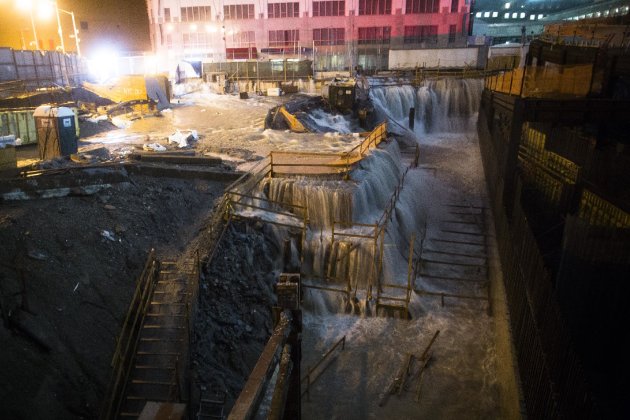
NEW YORK (AP) — As superstorm Sandy marched slowly inland, millions along the East Coast awoke Tuesday without power or mass transit, with huge swaths of the nation's largest city unusually vacant and dark.
New York was among the hardest hit, with its financial heart in Lower Manhattan shuttered for a second day and seawater cascading into the still-gaping construction pit at the World Trade Center. President Barack Obama declared a major disaster in the city and Long Island.
The storm that made landfall in New Jersey on Monday evening with 80 mph sustained winds killed at least 17 people in seven states, cut power to more than 7.4 million homes and businesses from the Carolinas to Ohio, caused scares at two nuclear power plants and stopped the presidential campaign cold.
Authorities launched an effort to evacuate about 800 people in the town of Moonachie in northern New Jersey early Tuesday after a berm overflowed, authorities said.
The massive storm reached well into the Midwest: Chicago officials warned residents to stay away from the Lake Michigan shore as the city prepares for winds of up to 60 mph and waves exceeding 24 feet well into Wednesday.
"This will be one for the record books," said John Miksad, senior vice president for electric operations at Consolidated Edison, which had more than 670,000 customers without power in and around New York City.
An unprecedented 13-foot surge of seawater — 3 feet above the previous record — gushed into Gotham, inundating tunnels, subway stations and the electrical system that powers Wall Street, and sent hospital patients and tourists scrambling for safety. Skyscrapers swayed and creaked in winds that partially toppled a crane 74 stories above Midtown.
The massive storm caused the worst damage in the 108-year history of New York's extensive subway system, according to Joseph Lhota, the chairman of the Metropolitan Transportation Authority.
Right before dawn Tuesday, a handful of taxis were out on the streets, though there was an abundance of emergency and police vehicles.
Remnants of the former Category 1 hurricane were forecast to head across Pennsylvania before taking another sharp turn into western New York by Wednesday morning. Although weakening as it goes, the massive storm — which caused wind warnings from Florida to Canada — will continue to bring heavy rain and local flooding, said Daniel Brown, warning coordination meteorologist at the National Hurricane Center in Miami.








0 comments:
Post a Comment